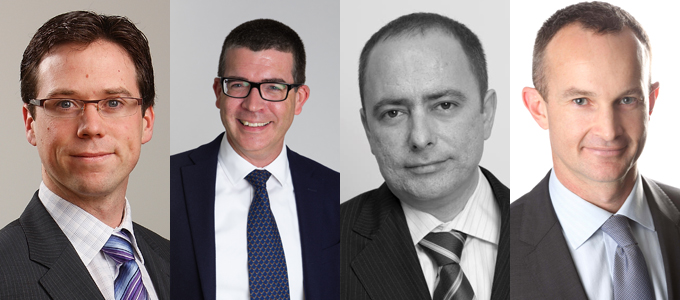AIMA paper: major investors tip more institutionalisation
The Alternative Investment Management Association has published a paper that presents a future outlook of the role, value and sustainability of hedge funds in Australia through the eyes of institutional investors.
The AIMA paper, ‘VISION 2025: Perspectives of Leading Australian Investors in Hedge Funds’ contains the views of some of Australia’s major investors in alternatives. They are Alistair Rew (AMP Capital), David George (Future Fund), Bobby Pometkov (Commonwealth Superannuation Corporation) and Craig Stanford (formerly at Morningstar). Each sits on AIMA’s local ‘Investor Advisory Group’, tasked with facilitating discussion and debate to foster stronger working relationships between managers and the investment community.
The paper’s themes are among those to be discussed at the next AIMA Australia Forum, the largest conference of its type in Australia, being held at the Westin Hotel in Sydney on September 12.
The Forum coincides with what is known as ‘hedge funds week’, which includes the annual Hedge Funds Rock fundraiser and dinner for the Australian Alternative Investment Awards, also being held at the Westin, on September 13.
The roundtable concluded that, by 2025, technology’s growing ability to separate alpha from beta, growing investor demand for scale, service and flexible solutions and a trend towards a more integrative approach to portfolio and risk management will see continued institutionalisation of hedge funds.
The AIMA paper says that new industry leaders will be firms that have established and continue to invest in a culture of data, technology and quantitative decision making, according to David George, who predicts that talk of ‘investing in hedge funds’ will be replaced by a greater division of hedge fund strategies, according to their underlying building blocks. These strategies, he says, will play a role across a wider segment of the institutional portfolio.
Alistair Rew agrees that the notion of ‘hedge funds’ is likely to disappear by 2025, with so called ‘hedge funds’ to be managed by teams that are increasingly part of global, multi-discipline, institutional investment management firms. He expects these teams to provide solutions across all risk-return, fee, liquidity combinations and spectrums to satisfy client demand. To complement and enhance the decision making across all aspects of the investment process, Rew can see more technology, data and visualisation specialists, behavioural finance experts, performance coaches and psychologists becoming part of investment teams.
Craig Stanford argues that the ability to isolate previously unidentified beta will be key to calculating manager value across the whole investment landscape, causing fragmentation between those managers that can and can’t demonstrate skills. To survive, some funds will be less protective of their ‘IP’ and align themselves to smaller pools of investors who can invest substantial amounts. His advice to managers is to start generating actual alpha or start pricing your beta accordingly.
Bobby Pometkov sees price discovery becoming faster, and alpha smaller to arbitrage, putting pressure on returns and fees for some strategies. Meanwhile he says the laws of supply and demand will continue to work, with funds that still have an edge or high barriers to entry able to charge higher fees. He advises managers to look at ways to become more nimble and innovative in aligning their interests with investors.
The Australian paper follows a global virtual roundtable held by AIMA earlier this year to capture the future perspectives of hedge fund managers, culminating in its recent seminal paper “Perspectives – industry leaders on the future of the hedge fund industry”.
The paper includes wide-ranging conversations with 25 of the leading figures in the industry, who collectively account for over 300 years of industry leadership and manage in excess of US$500 billion in hedge fund assets.
That paper shows that hedge fund firms are rapidly transforming their product offerings and how they operate in order to meet the changing needs of investors. These changes include adopting artificial intelligence and other disruptive technologies and partnering with clients on responsible investment mandates. Larger firms are increasingly becoming fully diversified asset managers with multiple product offerings at varying fee levels. The paper also highlights how many firms are changing themselves internally, with a growing number of managers becoming more data focused, relying more on teams of highly quantitative talent such as physicists or engineers and less on one or two ‘star’ traders.
Michael Gallagher, AIMA Australia general manager, said he expected the Australian VISION 2025 paper would be equally thought provoking from an investor perspective, helping managers and the industry at large move in step with investor needs and sentiments.
– G.B.









